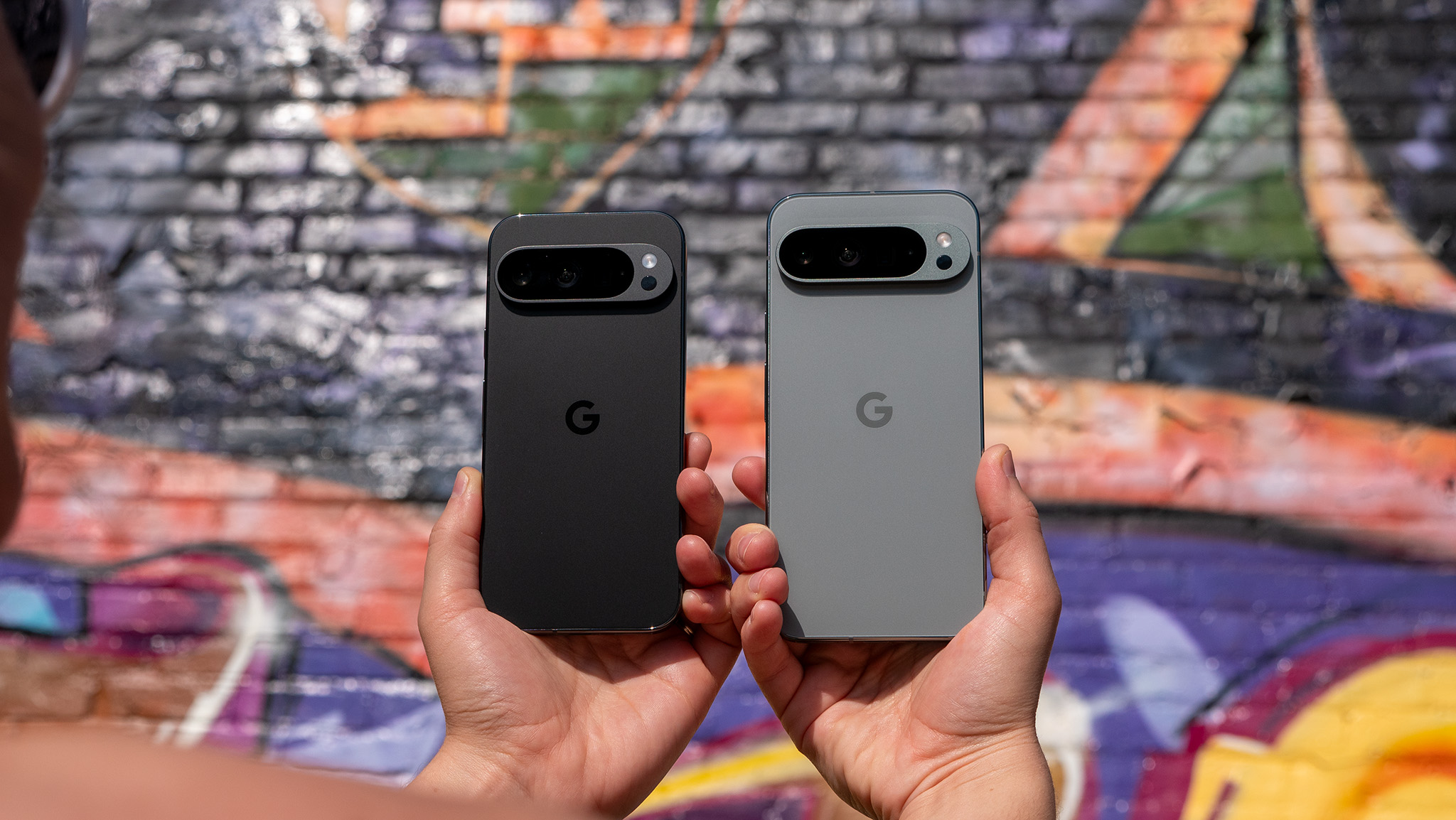
The Pixel 9 series represents some of the biggest design changes in Pixel history, and that begins with the Google Pixel 9 Pro and Pixel 9 Pro XL. Both phones deliver a singular vision of what Google sees in the future of Pixel phones, offering an identical experience at two distinct sizes.
Since there's no real difference between these two phones other than their size, we're combining the reviews to give you a better look at the best Pixel 9 experience available. I've been using both models interchangeably over the past week and have come away disappointed about problems that have plagued Pixels for years. Thankfully, many of Google's latest feature additions help offset those disappointing feelings.
If you're looking to pick up a Google Pixel 9 Pro or Google Pixel 9 Pro XL this year, read on to find out why that's a great choice for some folks, while others might want to look elsewhere for their next smartphone upgrade.
Google Pixel 9 Pro: Price and availability
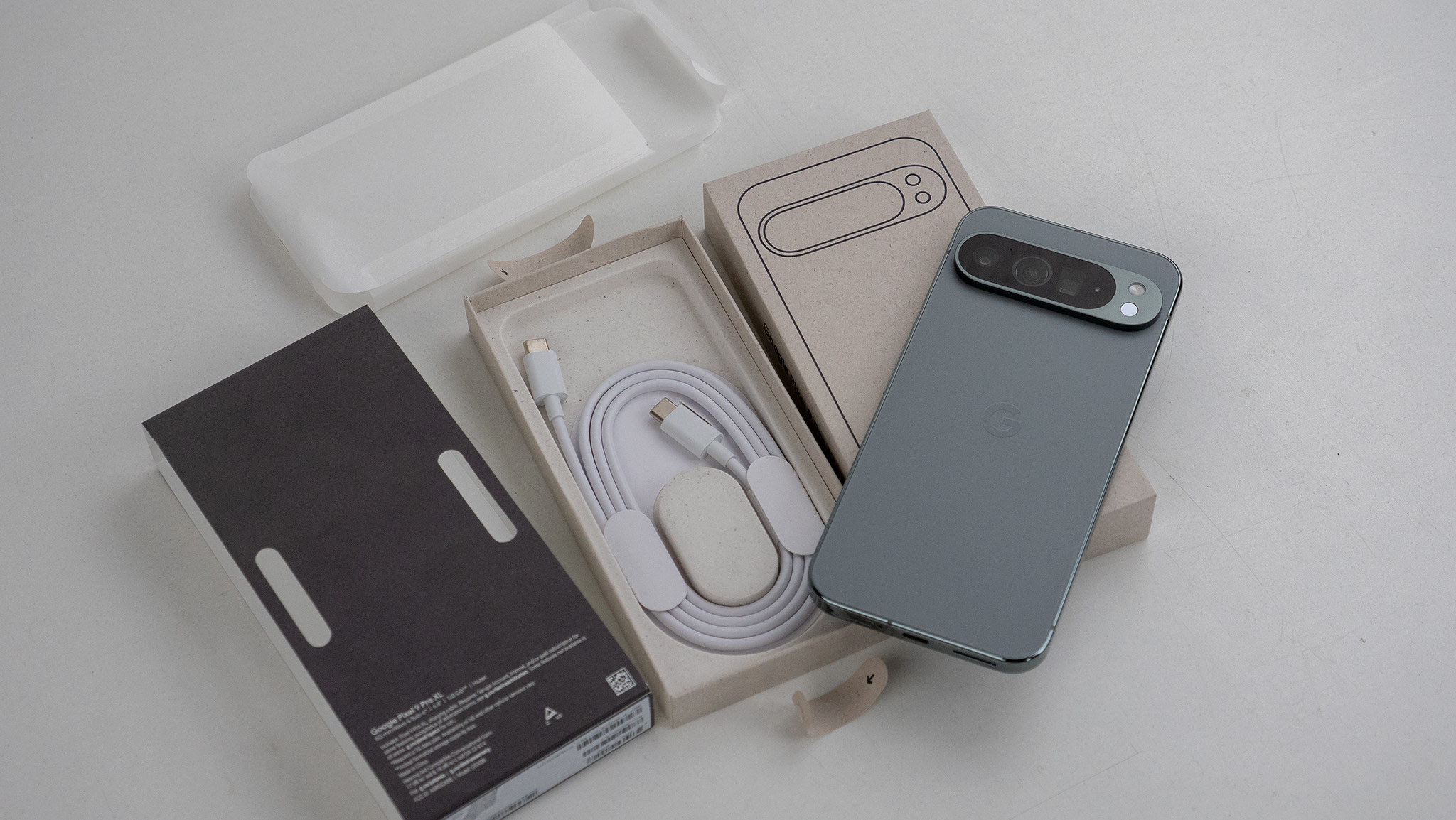
The Google Pixel 9 Pro and Pixel 9 Pro XL are now officially available as of August 22, 2024. Both models offer a choice of 128GB, 256GB, 512GB, or 1TB of storage, as well as 16GB of RAM. You can choose from either size in a range of colors, including Obsidian (black), Porcelain (white), Hazel (grey), and Rose Quartz (pink).
The Google Pixel 9 Pro starts at $999 with 128GB of storage, while the larger Pixel 9 Pro XL starts at $1099 with 128GB of storage. You can buy the Pixel 9 series in any of the following countries:
- NAMER: US, Canada
- EMEA: Austria, Belgium, Czechia, Denmark, Finland, France, Estonia, Germany, Hungary, Ireland, Italy, Latvia, Lithuania, Netherlands, Norway, Poland, Portugal, Romania, Slovakia, Slovenia, Spain, Switzerland, Sweden, UK
- APAC: Australia, India, Japan, Malaysia, Singapore, Taiwan
All Pixel 9 models include Pixel VPN at no additional cost, which helps protect you while on the go and connecting to potentially unscrupulous public Wi-Fi hotspots. Google is also including one year of Gemini Advanced with every Google Pixel 9 Pro or 9 Pro XL, which would normally cost $20 per month with the AI-tier Google One subscription.
Each Google Pixel 9 Pro box contains no plastic and is impressively environmentally friendly.
Google Pixel 9 Pro: What I like so far
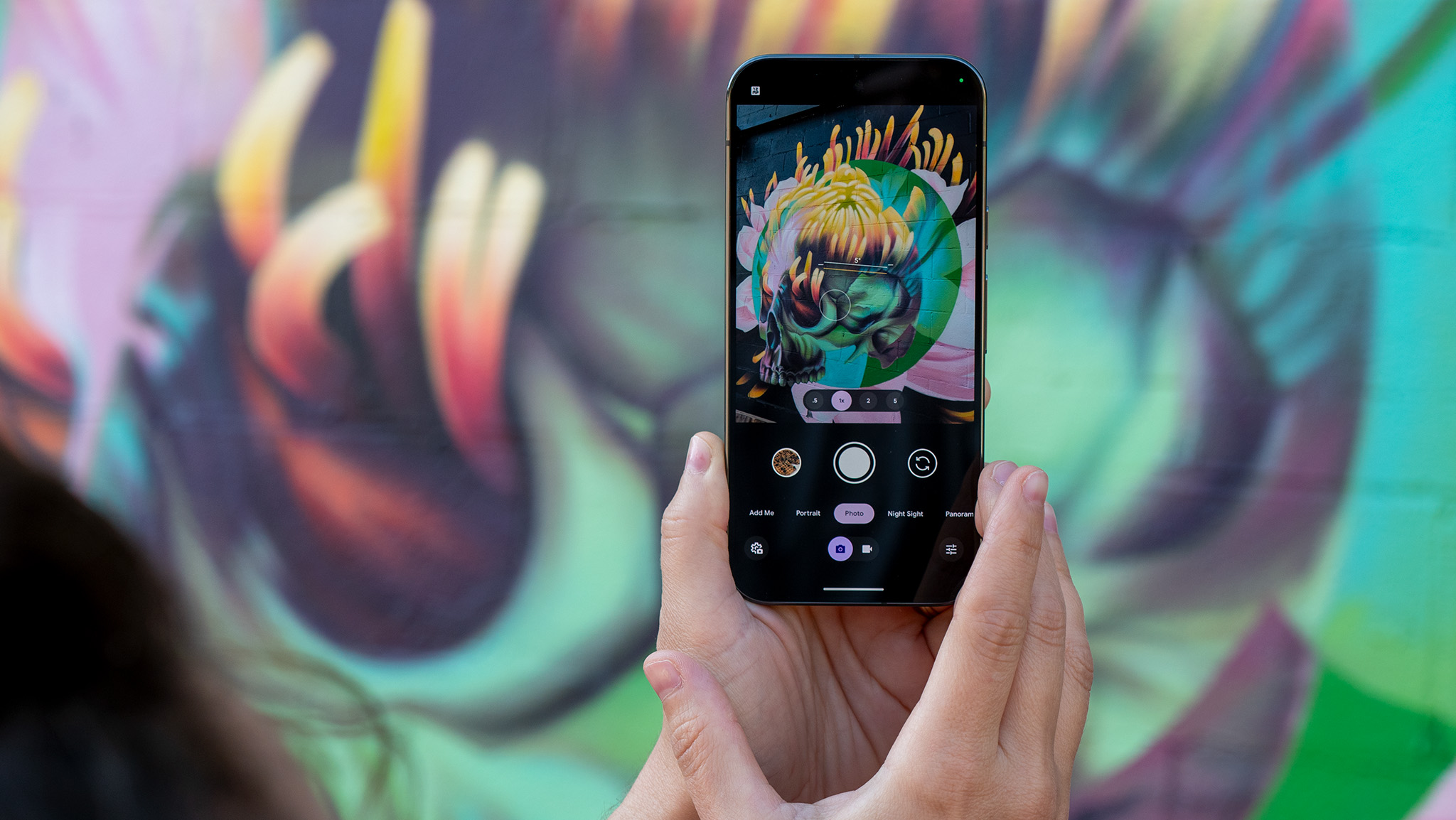
This past weekend, I spent a lot of time with my family. Inevitably, lots of pictures are taken, but none of them ever have everyone in the frame. The Pixel 9 Pro changed that for the better, and I couldn't be happier with the result. Some have wondered how useful the Add Me feature might be, but let me tell you this: it's totally invaluable, and I hope this comes to other Android phones.
Being able to include everyone in a photo — one that's an actual good photo of everyone and not a lame selfie at an awkward angle to fit everyone in — is pure genius of the highest form. It's one of those features that makes AI make sense, something particularly important in a day in age where AI is invading everything and seemingly providing very little value given it's monumental R&D cost.
Add Me is my favorite new camera mode of the decade, so far.
It's not perfect — there are some telltale signs that someone was cropped and placed into the frame if you look close — but I'd wager no one would look for these small imperfections if you don't ask them to look. As it stands, Add Me is my favorite new camera mode so far this decade.

Fans of Panoramas will also adore the Pixel 9 Pro series, as the new panorama mode allows it to take substantially better panoramas, especially when the lighting isn't exactly perfect.
Putting them side-by-side with quite literally any other phone shows how much better Google's new panorama feature is, and I fully expect to see these upgrades make their way to other phones in the future. For now, though, this is the phone for panorama lovers.
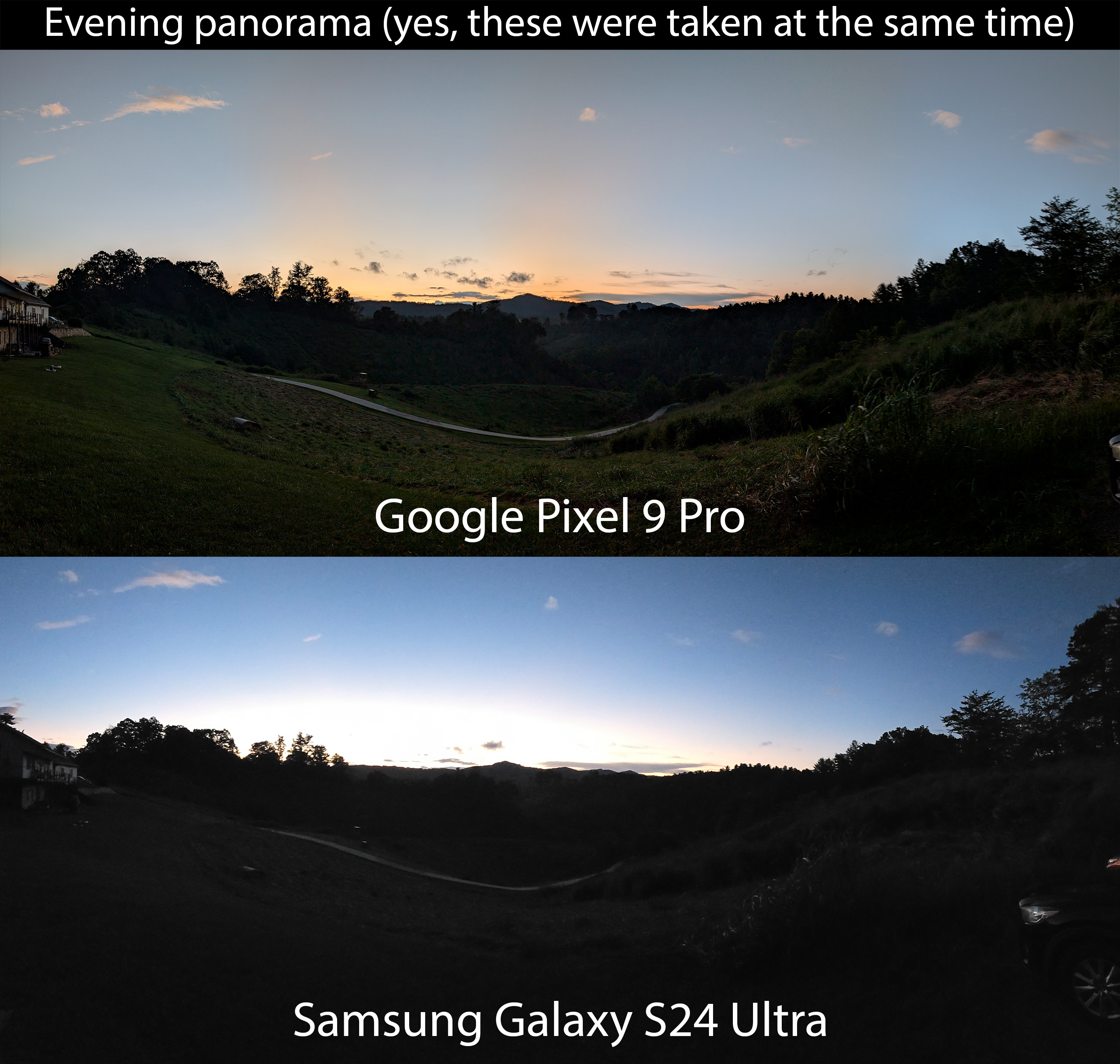
And while I'm covering new features, the Pixel Screenshots app has been even more impressive than I initially expected it to be. One of the biggest reasons for this is that it automatically imported every screenshot stored in Google Photos that I've ever taken.
That's years of screenshots, all processed and indexed, now searchable locally. If I were to continue using this phone long-term, I'd be changing how I take notes and, instead, just take screenshots and categorize them for later.
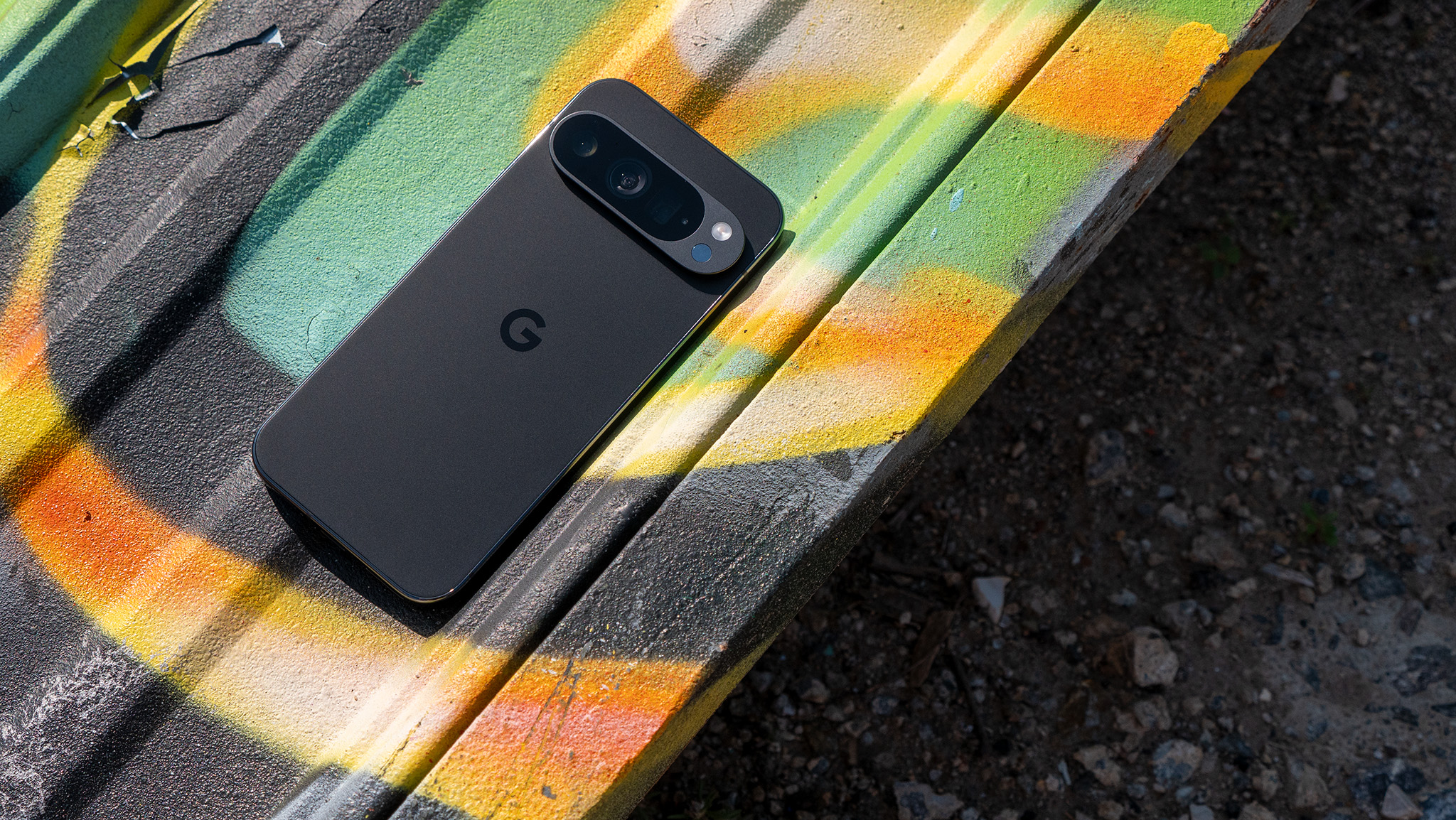
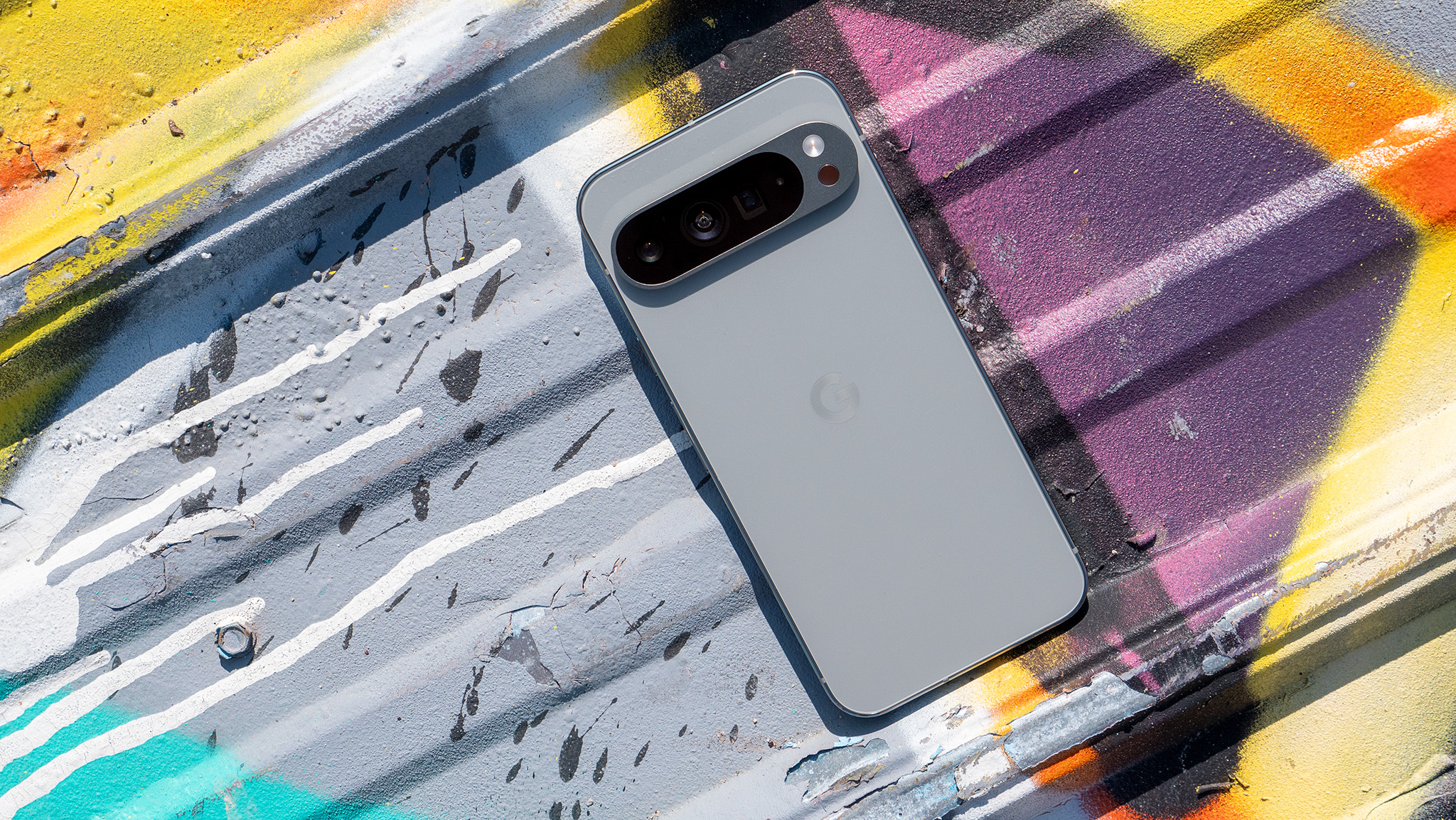
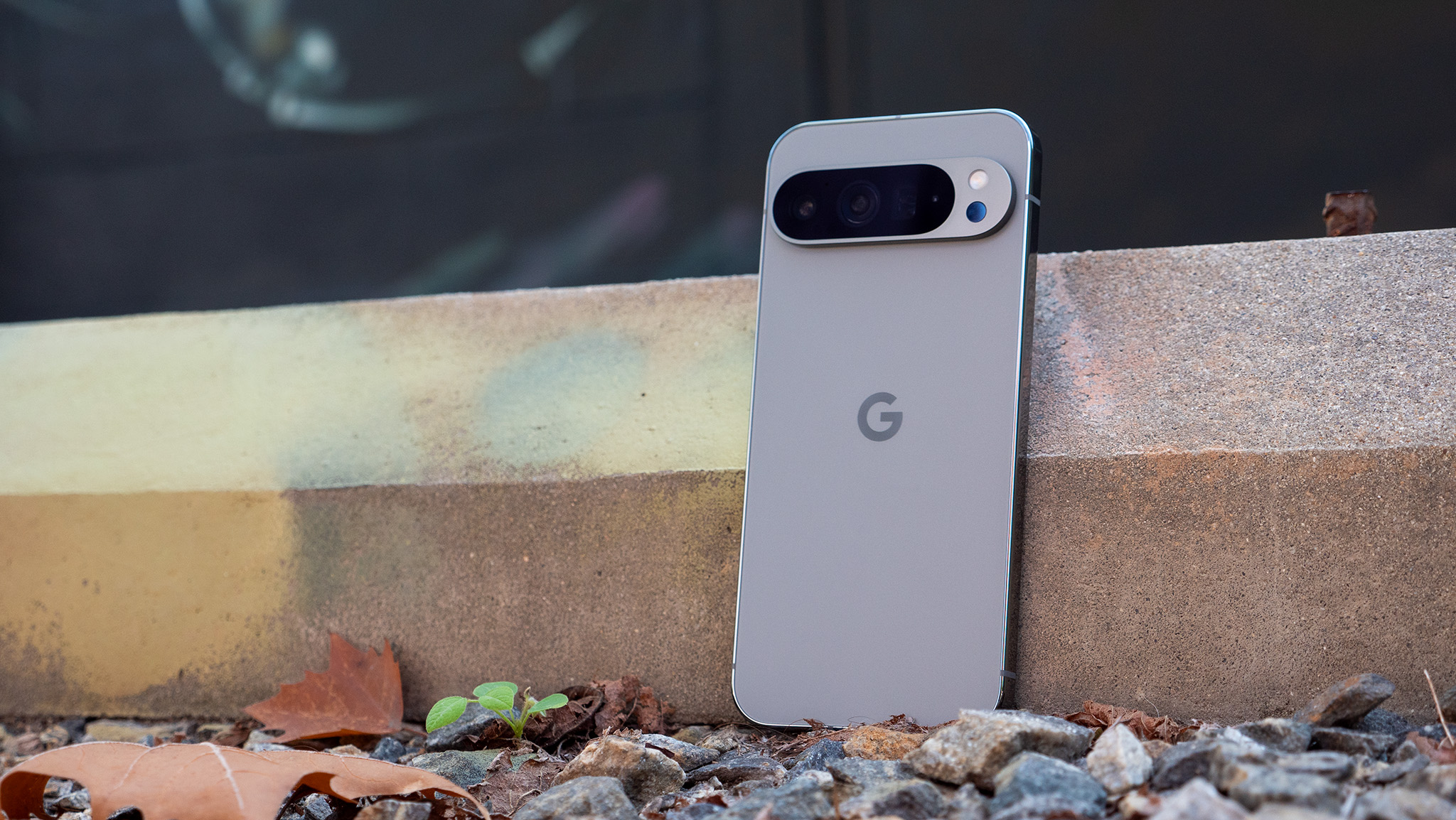
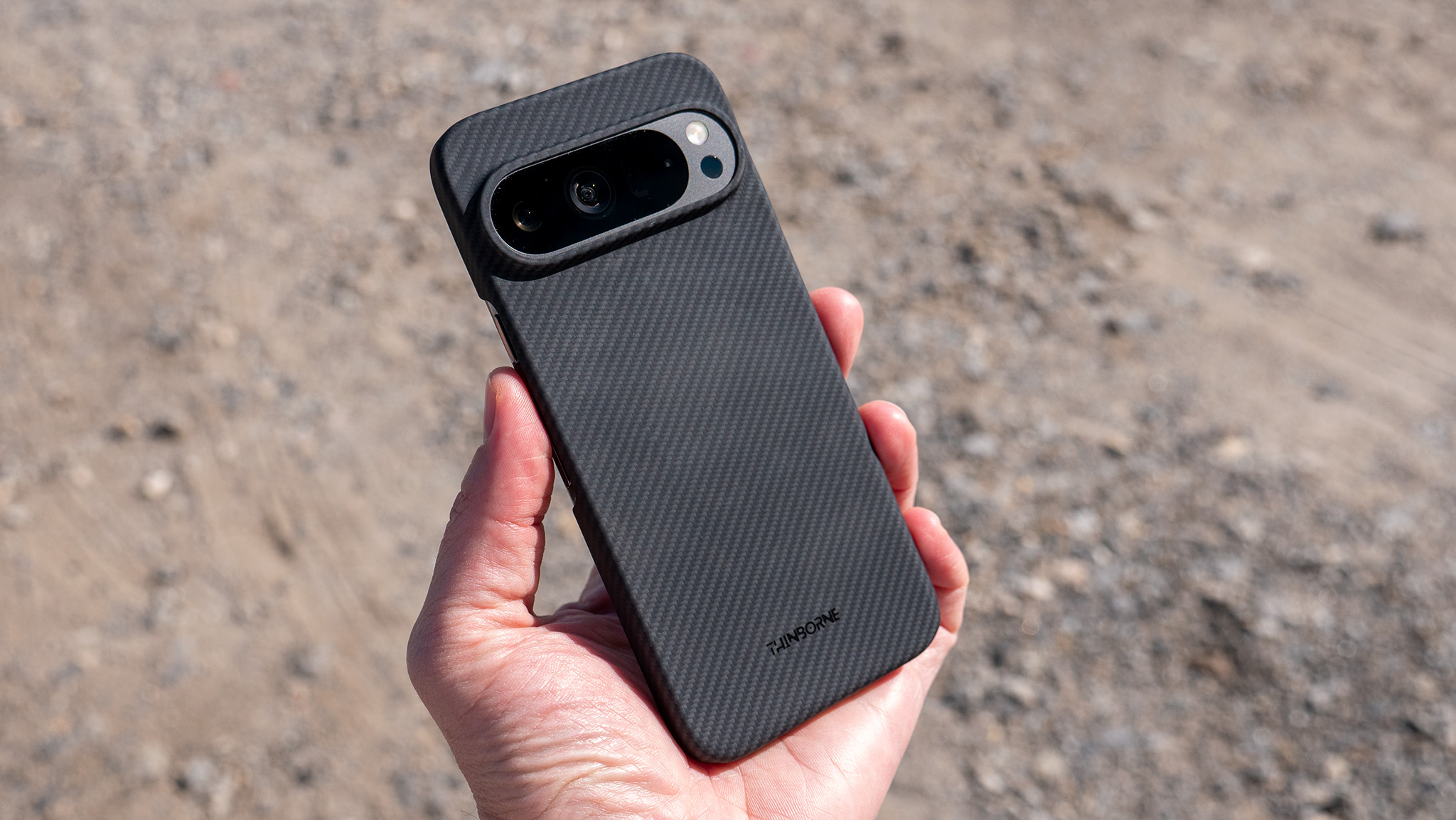
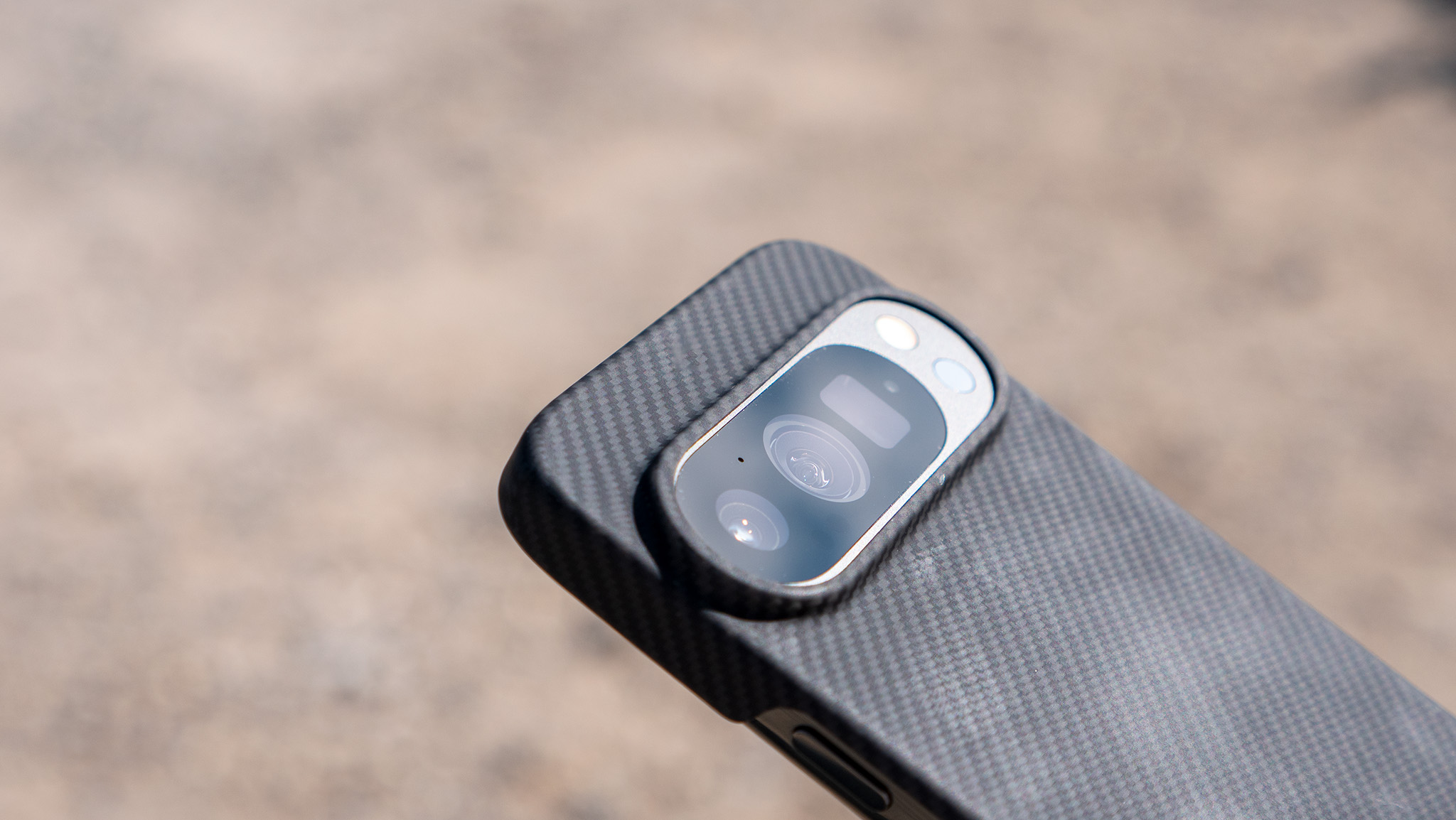
Another surprise came in the form of the phone's design itself. Despite initial misgivings about the very iPhone-like redesign, the design has grown on me even if I still prefer the Pixel 8's design language overall. Google's design director said the company now designs its phones to be put in cases, and that seems to fit perfectly with my experience with the phone. Indeed, both phones look and feel best in a case, and that's saying a lot since I'm normally a case-less kind of guy.
So far, my favorite case is the Thinborne Pixel 9 Pro case, which came as no surprise since I've loved Thinborne's minimalist cases for years. It adds almost no bulk to the phone while giving it an important element of grippiness, something that's vital given how crazy slippery these new phones are. It also adds MagSafe capability, so you can use some compatible MagSafe accessories and chargers.
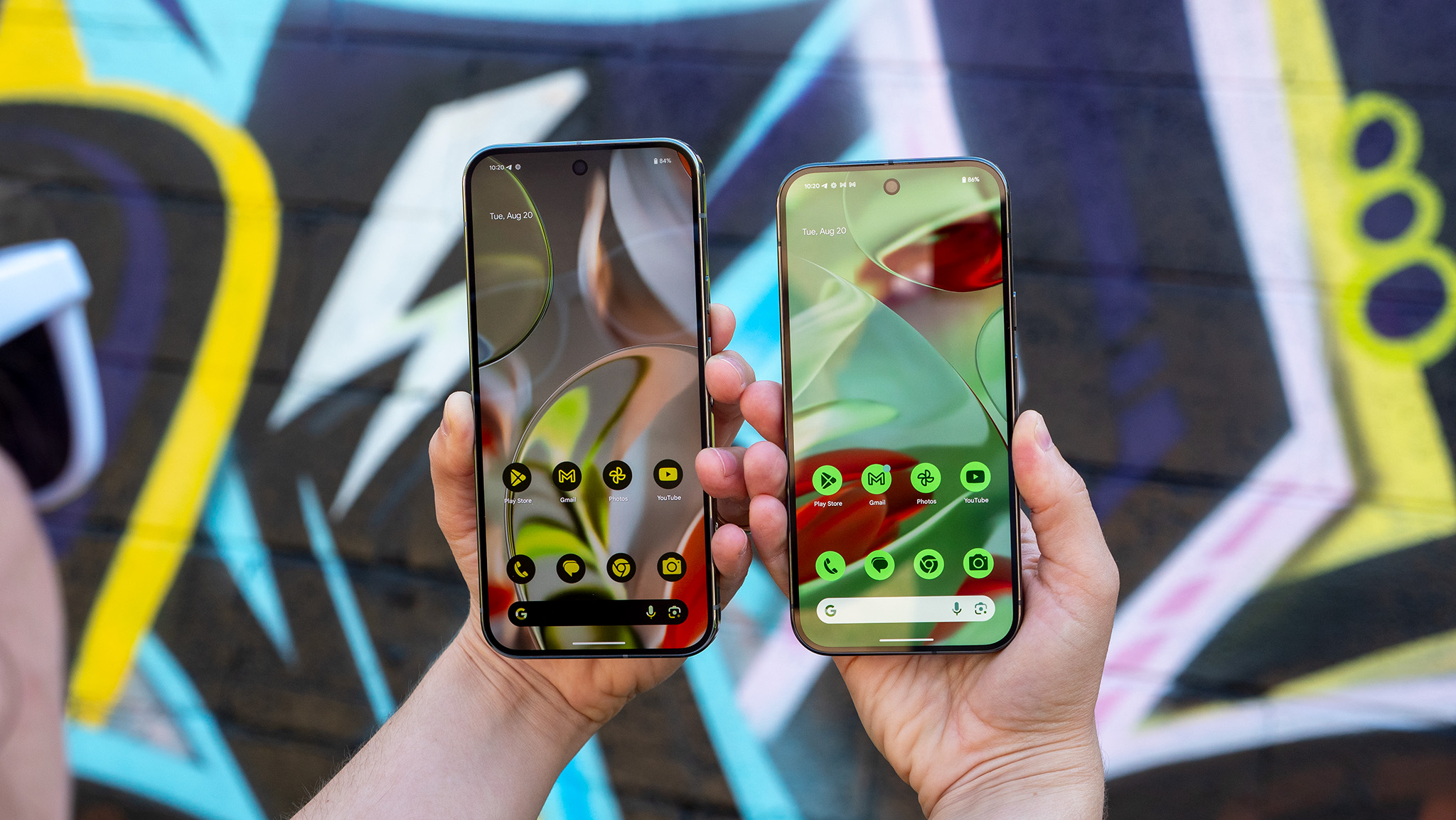
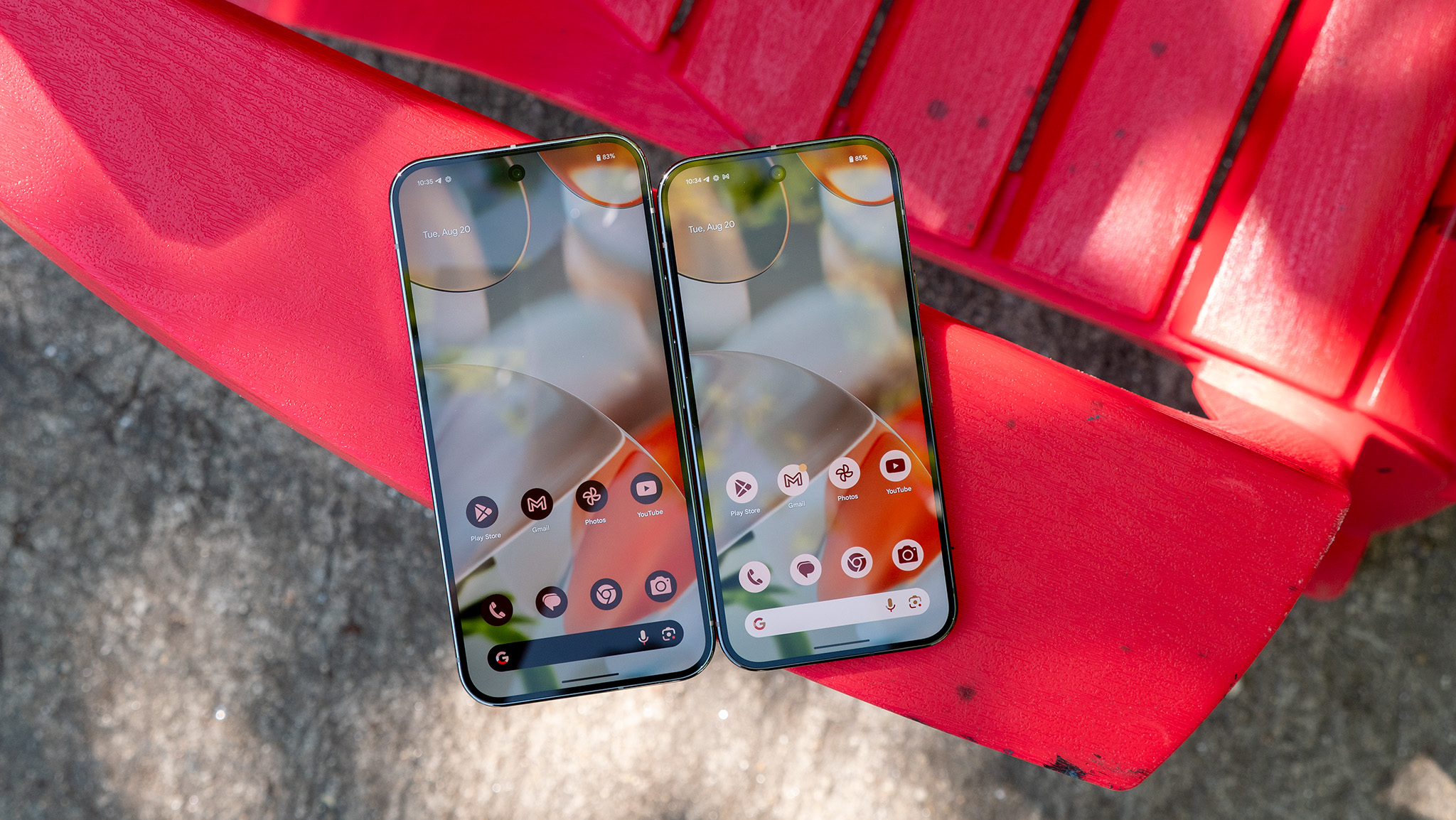
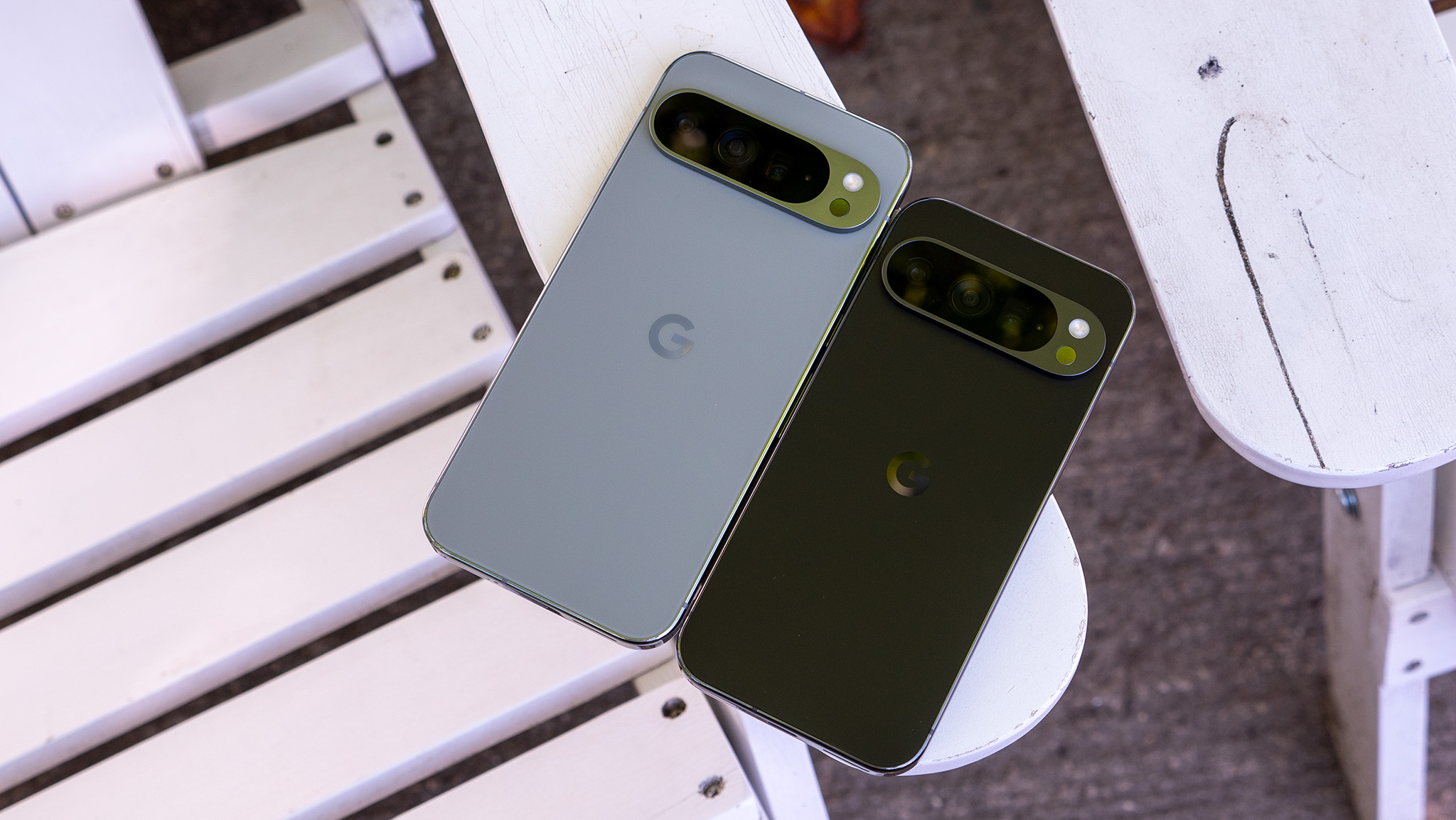
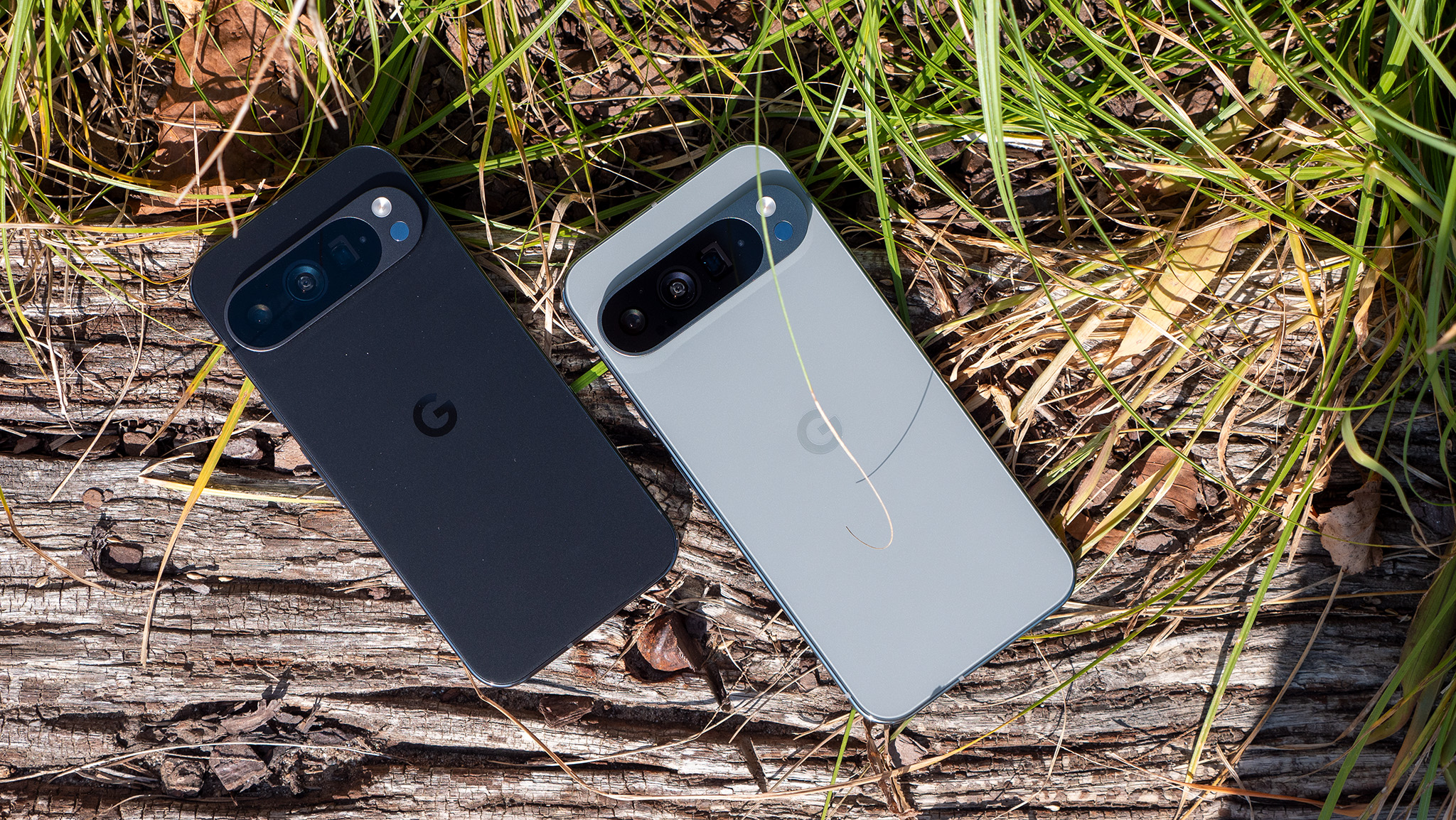
Ever since the first Samsung Galaxy Note came out, I've been the person who picks the biggest phone possible. But while I've been using the Pixel 9 Pro and Pixel 9 Pro XL, I've found myself grabbing the smaller one most of the time.
I've also been very surprised at how much I love the smaller-sized Pixel 9 Pro. Ever since the first Samsung Galaxy Note came out, I've been the person who picks the biggest phone possible. But while I've been using the Pixel 9 Pro and Pixel 9 Pro XL, I've find myself grabbing the smaller one most of the time.
Part of it is that it just feels so much nicer to use, particularly one-handed. It's a wonderful size, and its flatter shape makes it a delight to use all day. It also helps that there's feature parity between the models, so I don't miss out on anything important when choosing the smaller model. That's a first for Pixels.
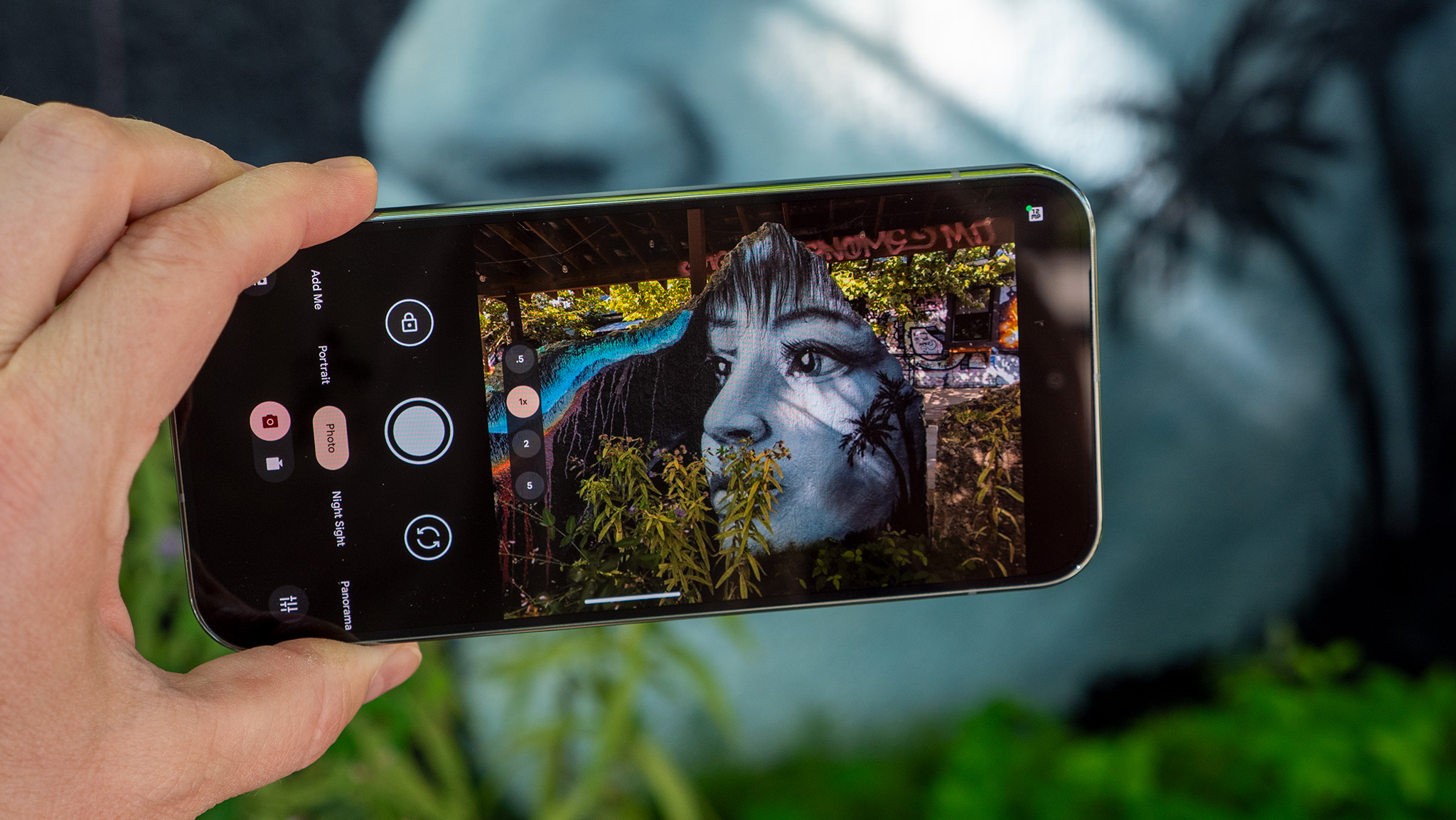
Unsurprisingly, the camera is another one of the phone's best features. I've already covered how amazing the Add Me feature and the panorama upgrades are, but the best-hidden feature is one I've written about since the Pixel 6 days: Pixels take photos of moving objects — that primarily means pets and kids — better than any phone in the U.S. market.
You can't buy another phone series in the U.S. that takes crisp imagery of your never-sit-still kids or pets like a Pixel can.
Internationally, phones from Honor (like the Honor 200 Pro) have caught up, but you can't buy another phone series in the U.S. that takes crisp imagery of your favorite little ones like a Pixel can. I'll have a more detailed breakdown of these phones' cameras in a separate camera review, but overall, it seems like a marginal upgrade over the Pixel 8 Pro in most ways.
Battery life has also been wonderful, and while I haven't noticed much of a difference between either of these phones and last year's Pixel 8 Pro, benchmarks tell a different story.
Our parent company, Future PLC, runs lab tests via the Future Labs department and found that it took over an average of 13 hours to run down the battery on the Pixel 9 Pro and the Pixel 9 Pro XL. Comparatively, the Pixel 8 Pro died after just 9 hours of running the same test. Clearly, Google wasn't kidding when they said Tensor G4's efficiency was better.
Daily performance is worse than Pixel 8 Pro in some cases, but Pixel 9 Pro/XL don't get searingly hot like that phone.
Lastly, I'm very pleased to report that Google seems to have finally conquered the excessive heat issues that have plagued Tensor-powered Pixels with Tensor G4 on the Pixel 9 series. While performance is actually worse in some cases when compared to the Pixel 8 series (read below for that), the phone doesn't become as hot as a frying pan when playing games for a long time — although it does still get warm.
This more aggressive throttling not only keeps the phone from heating up as the Pixel 8 Pro does, but it also keeps it from having huge framerate dips while playing. In a Minecraft test, I saw the Pixel 8 Pro drop to as low as 35FPS for a minute, while the Pixel 9 Pro XL never dipped below 65FPS.
Google Pixel 9 Pro: What's not great
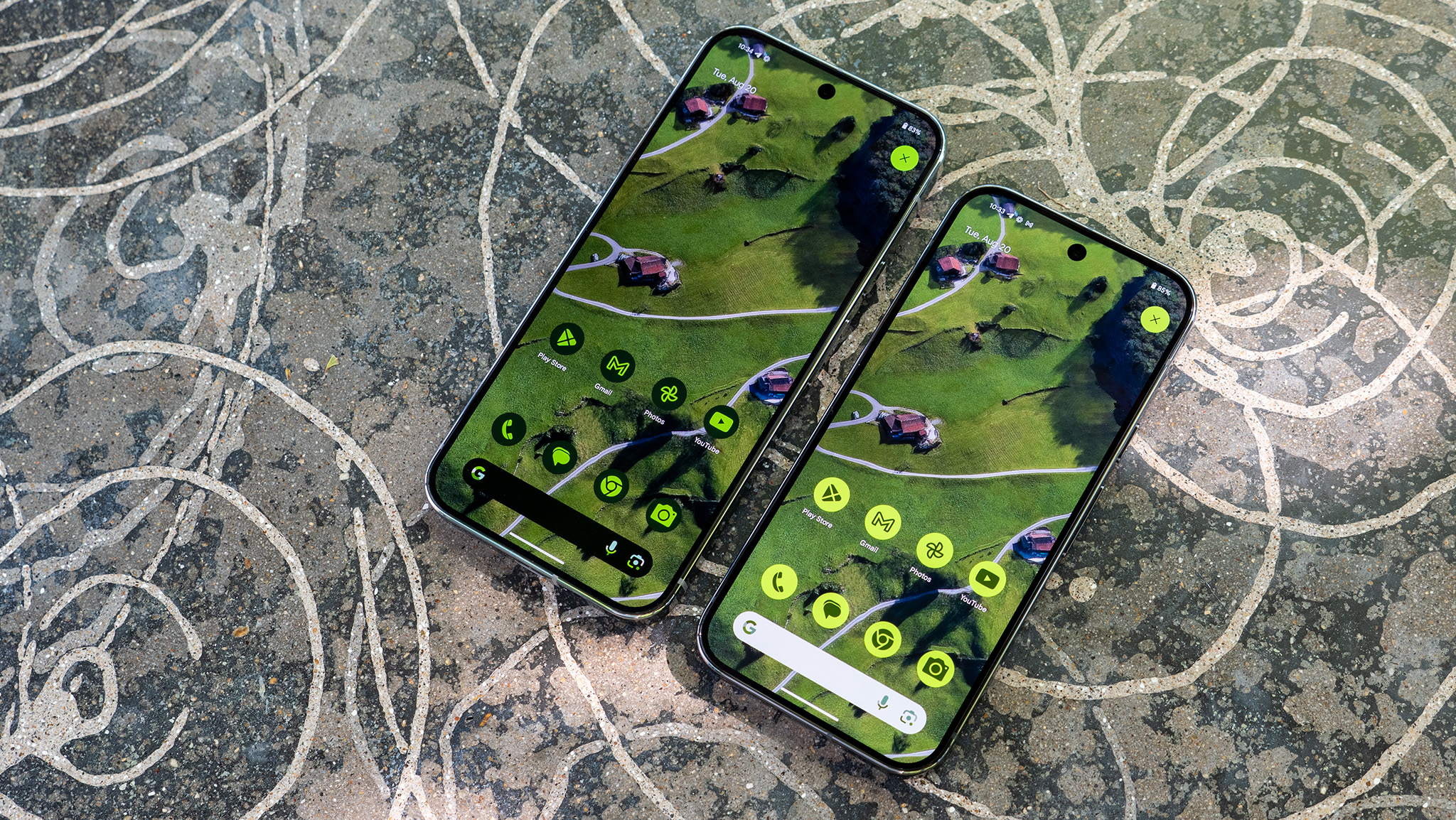
Some of my biggest problems with both of these phones are ones that, thankfully, not everyone will have to deal with. First off, the new ultrasonic fingerprint scanner has been super hit-or-miss with me. Some days, it works fine and feels no different from the excellent optical fingerprint sensor on the Google Pixel 8 Pro.
On other days, it works half the time or less. There have been times when it flat-out doesn't work at all for me, which you can see in the GIF below. I've complained about this problem since Samsung started using ultrasonic fingerprint sensors on the Galaxy S10 many moons ago. It turns out that I'm not alone, and this technology just doesn't work well for some people, although I've yet to get a straight answer as to why.
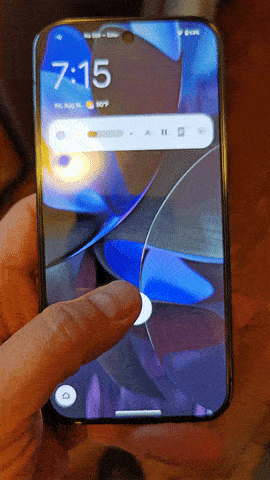
The new fingerprint sensor doesn't work with some screen protectors and was generally unreliable for me.
Worse yet, some screen protectors cause the fingerprint sensor to stop working entirely, forcing you to use Google's "bank grade" face unlock. Some people prefer face unlock, but I'm not sure how much I trust the single-camera solution despite Google telling us otherwise.
Thankfully, some people have reported that this cheap tempered glass protector on Amazon will work with the phone. Google says it officially supports options from companies like Case-Mate, Zagg, Otterbox, and others. However, this won't fix the scanner's inconsistent nature for me, which seems incredibly susceptible to changes in skin moisture (and maybe other factors).
If Google had just made the fingerprint sensor in the power button a capacitive sensor — as it is on every foldable phone — this problem wouldn't exist.
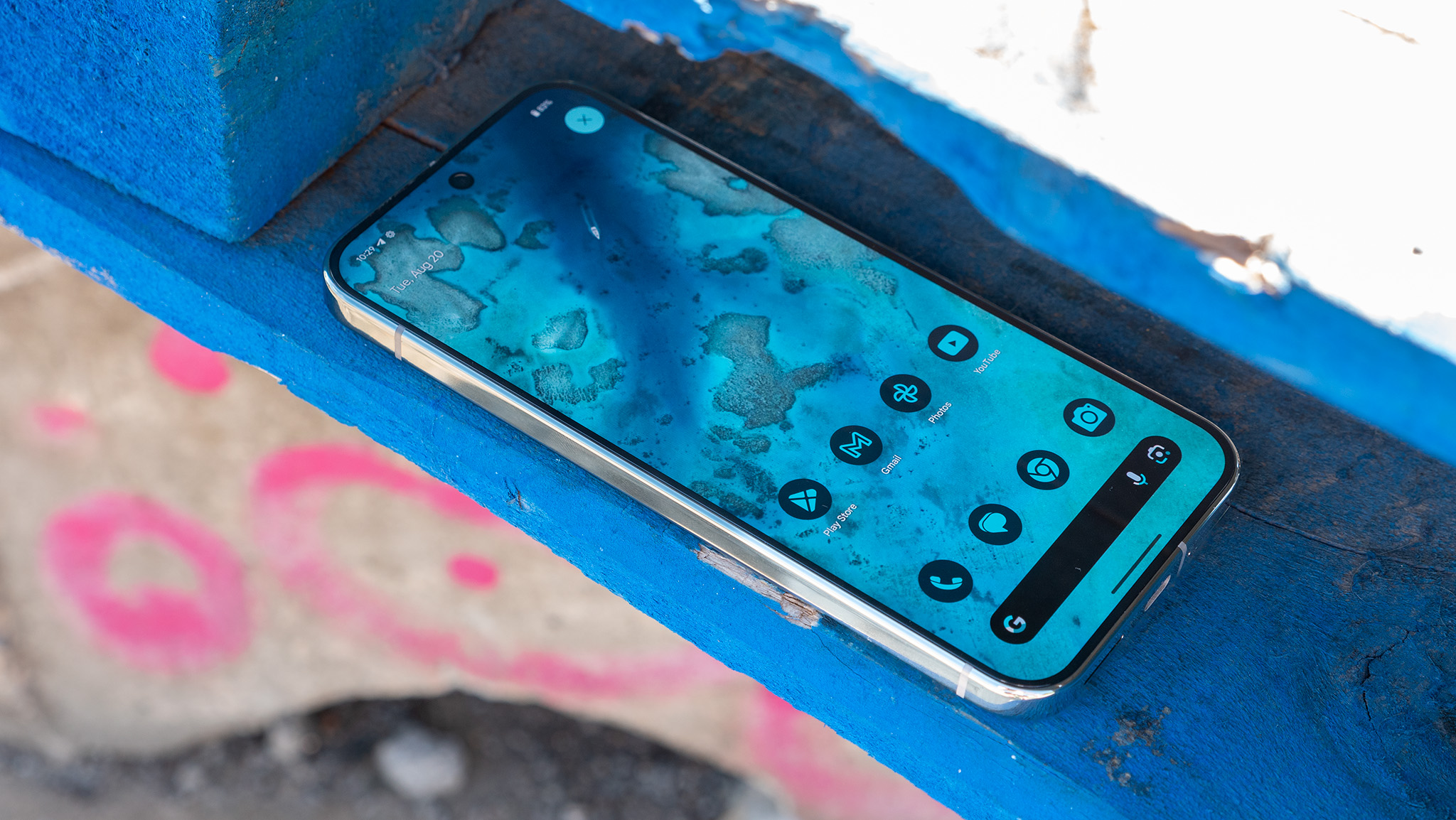
Second, the ultra-low 240Hz PWM rate used to "dim" the phone's display gives me terrible headaches, especially when I try to use the phone in the evening. This problem started about 2 years ago for me and has only gotten worse as displays have gotten ultra-bright.
The 3000-nit display on these phones is insanely bright, and flickering on and off at a low rate of 240Hz is nothing short of abysmal. Google is the only smartphone company that hasn't upgraded its rate — Samsung and Apple now use 480Hz on most devices — and companies like Honor and OnePlus push that rate to 2160Hz, 4320Hz, and beyond.
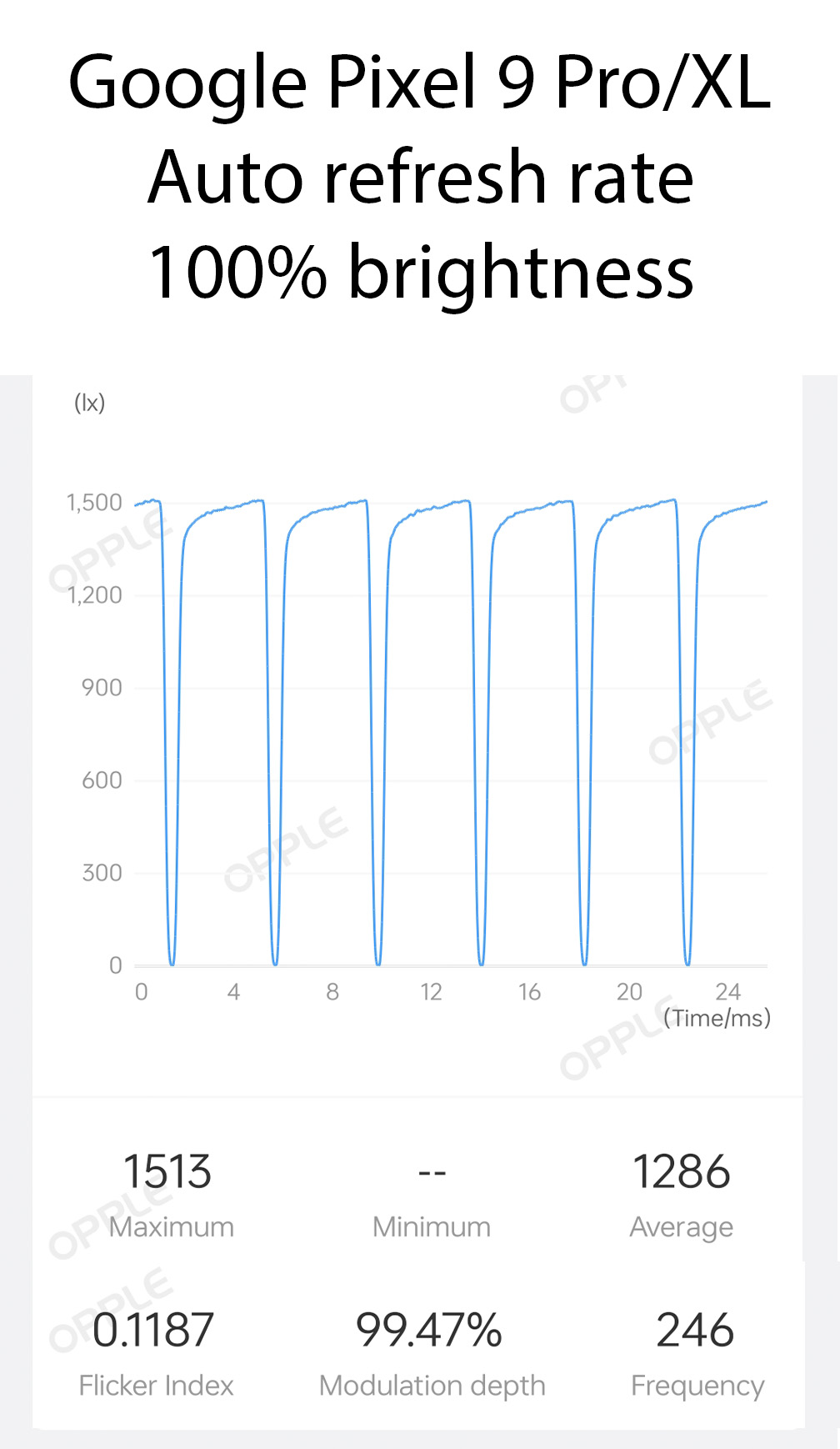
At this brightness, Google is not even close to complying with the recommended IEEE PAR 1789 standard for displays and lighting.
And before we move beyond displays, the new rounder corners on the Pixel 9 series will inevitably cut off some UI elements in apps or games. It's not the end of the world, but I noticed some obvious clipping in Minecraft and other titles, which might bother some folks.
For the second year in a row, Google has raised the price of Pixel Pro models by $100.
Beyond my personal issues with the phone are some more objective criticisms people are bound to face when using a Pixel 9 Pro or Pixel 9 Pro XL. As Android Central contributor Brady Snyder pointed out when he wrote this article, the Tensor G4 processor inside the Pixel 9 series isn't much of an upgrade over the Tensor G3 in everyday tasks, including gaming performance.
As I said in the section above, the Pixel 9 Pro and Pro XL stay cool even after gaming for 30 minutes or more. However, these phones throttle a lot faster than the Pixel 8 Pro and stay throttled while under heavy loads.
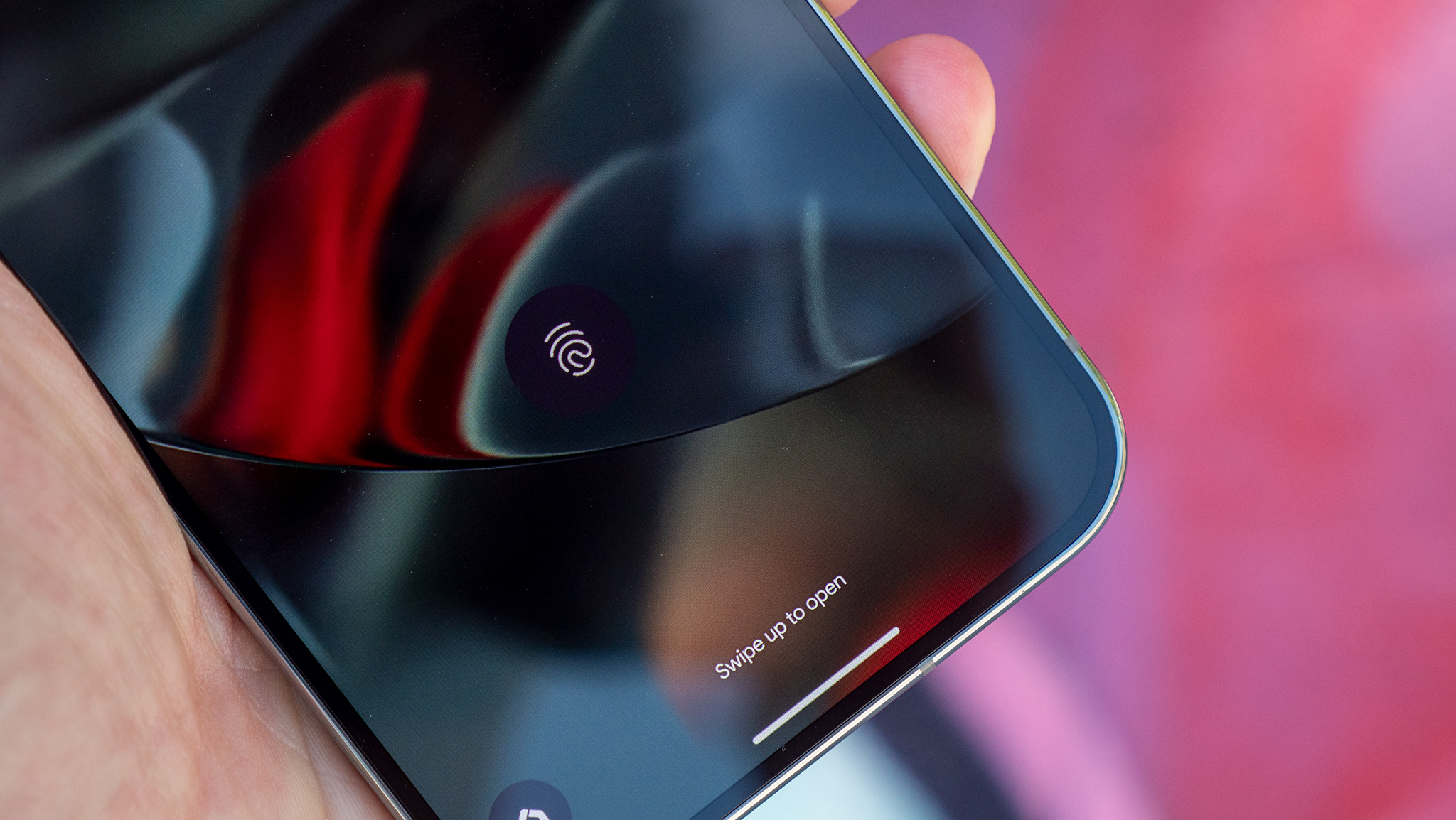
On the best of days, the Pixel 9 Pro and Pixel 9 Pro XL are as fast as a Galaxy S22.
In one test, I opened Minecraft on the bamboo forest template and left it running looking in the same direction on both phones for 30 minutes. At the end of the test, the Pixel 8 Pro had a framerate that stayed around the 80-95 FPS mark with dips into the 60s for a minute to cool down.
Meanwhile, the Pixel 9 Pro hovered around 65-70FPS without these drastic dips — but also without the higher framerates of the Pixel 8 Pro. On the best of days, the Pixel 9 Pro and Pro XL are as fast as a Galaxy S22 based on any number of tests I've run over the past week.
Initial charging speed is faster than Pixel 8, but a full charge takes just as long.
In my Pixel 9 hands-on, I talked about the new charging speeds for the phones and even was able to use Google's new 45W charger. While that charger is great for topping up the battery quickly from 0% to about 50% in under 30 minutes, a full charge isn't any faster than the Pixel 8 series — and charging the phone when it's above 50% battery level results in a much slower charge than you might expect.
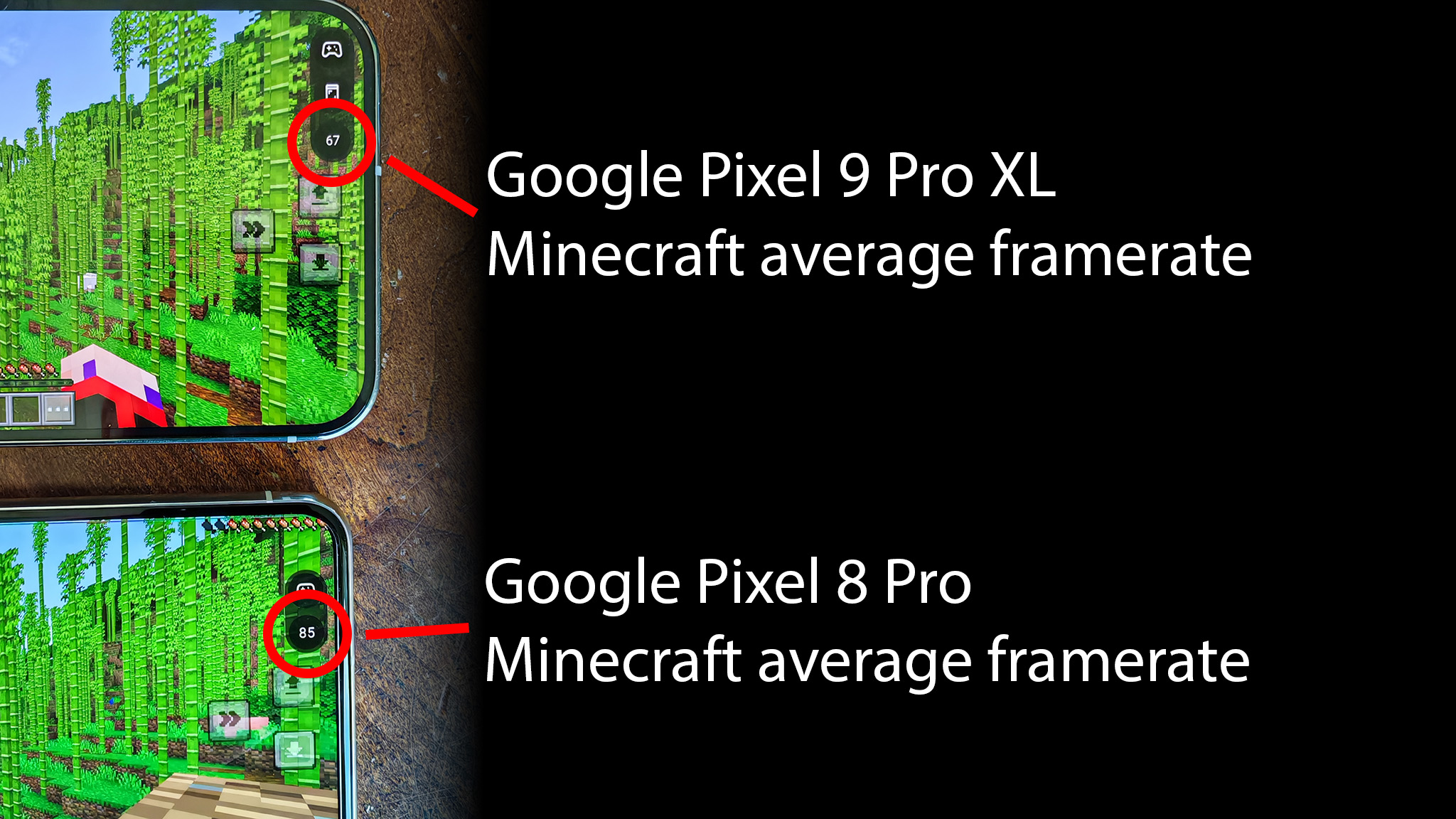
All of this comes at $100 more than last year's phones, which were also $100 more than the Pixel 7 generation. Google offers a lot of value with its phones — things like seven years of software updates, quarterly feature updates and additions, free Pixel VPN, and lots of other goodies — but it's hard for me to justify paying $1100 for a phone with 128GB of storage in the second half of 2024.
And while a Pixel 9 Pro is "the same price" as a Pixel 8 Pro — $999 — you'll actually have to spend $1099 to get the same size phone as last year, the Pixel 9 Pro XL.
Since Tensor isn't anywhere near as fast as the competition for everyday tasks or gaming, I have a distinct worry that the Pixel 9 will start feeling very slow before long, much less by the time seven years of software updates are up.
Google Pixel 9 Pro: The competition
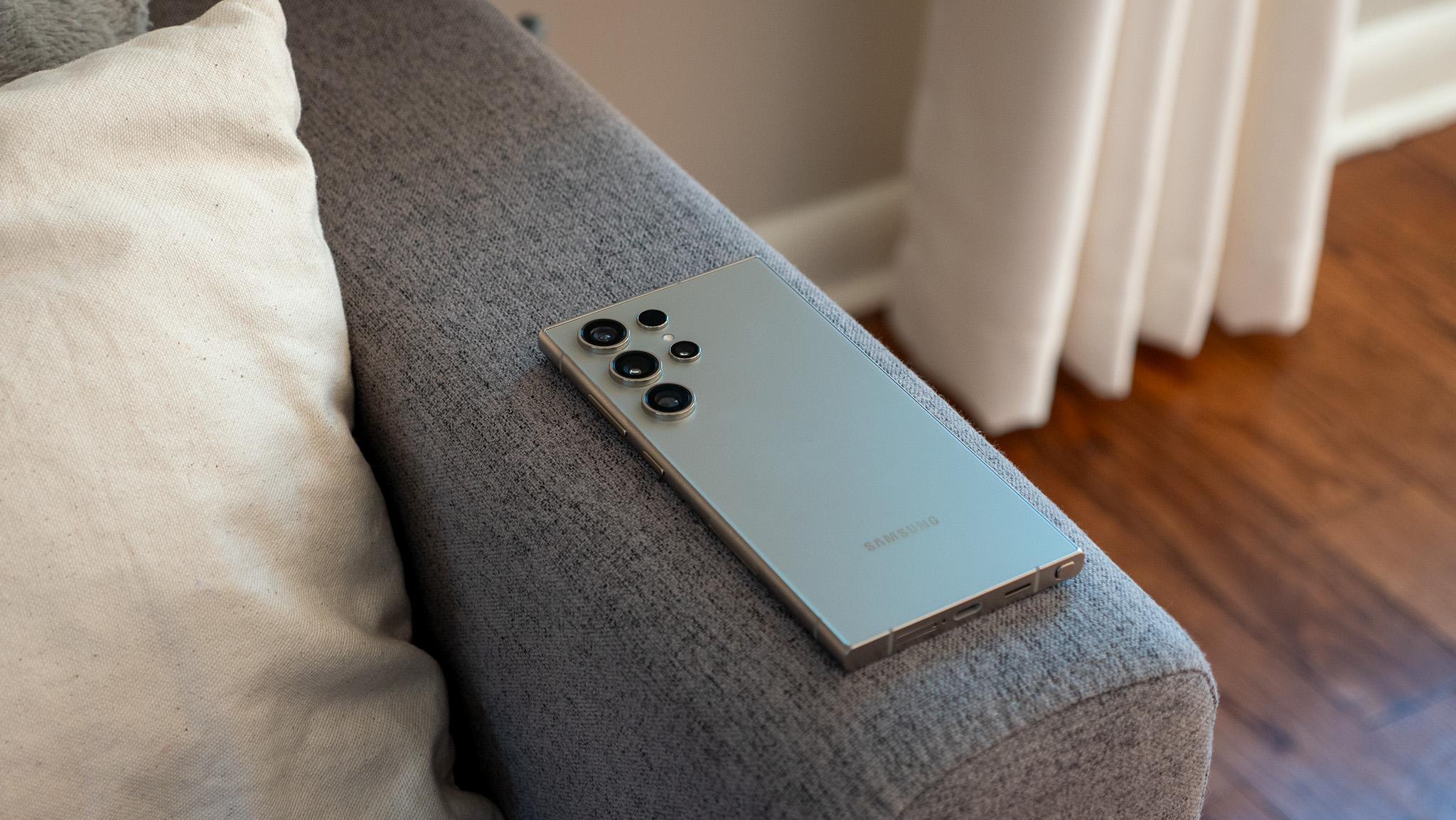
Google's biggest competition in the U.S. is both Samsung and Apple, and both companies offer phones with faster processors and displays with better PWM rates. The Galaxy S24 series is promised to deliver the same seven years of software updates as the Pixel 9 series, and given the gulf in performance between Google and Samsung's phones, any Galaxy S24 model will likely last longer without feeling sluggish like the Pixel 9 eventually will.
If you're looking for an even better display and crazy fast charging speeds, the OnePlus 12 does it all while costing even less than a Pixel 9 Pro. I personally use a OnePlus 12 daily and am more than happy with it, especially given its superior multitasking UI. OnePlus only offers four years of software and OS updates, but you may not plan to hold on to your phone for more than that, so it's probably an OK trade-off.
Of course, none of these phones come with those nifty Pixel-exclusive features like call screening, VPN, Pixel Studio, and others. Plus, as I've covered many times, Pixels take the best photos of kids and pets and now even have great features like Add Me that offer even more interesting photography options. And, unlike Samsung or OnePlus, The Pixel 9 Pro family gives you a choice of phone size without losing features or camera prowess.
Google Pixel 9 Pro: Should you buy it?
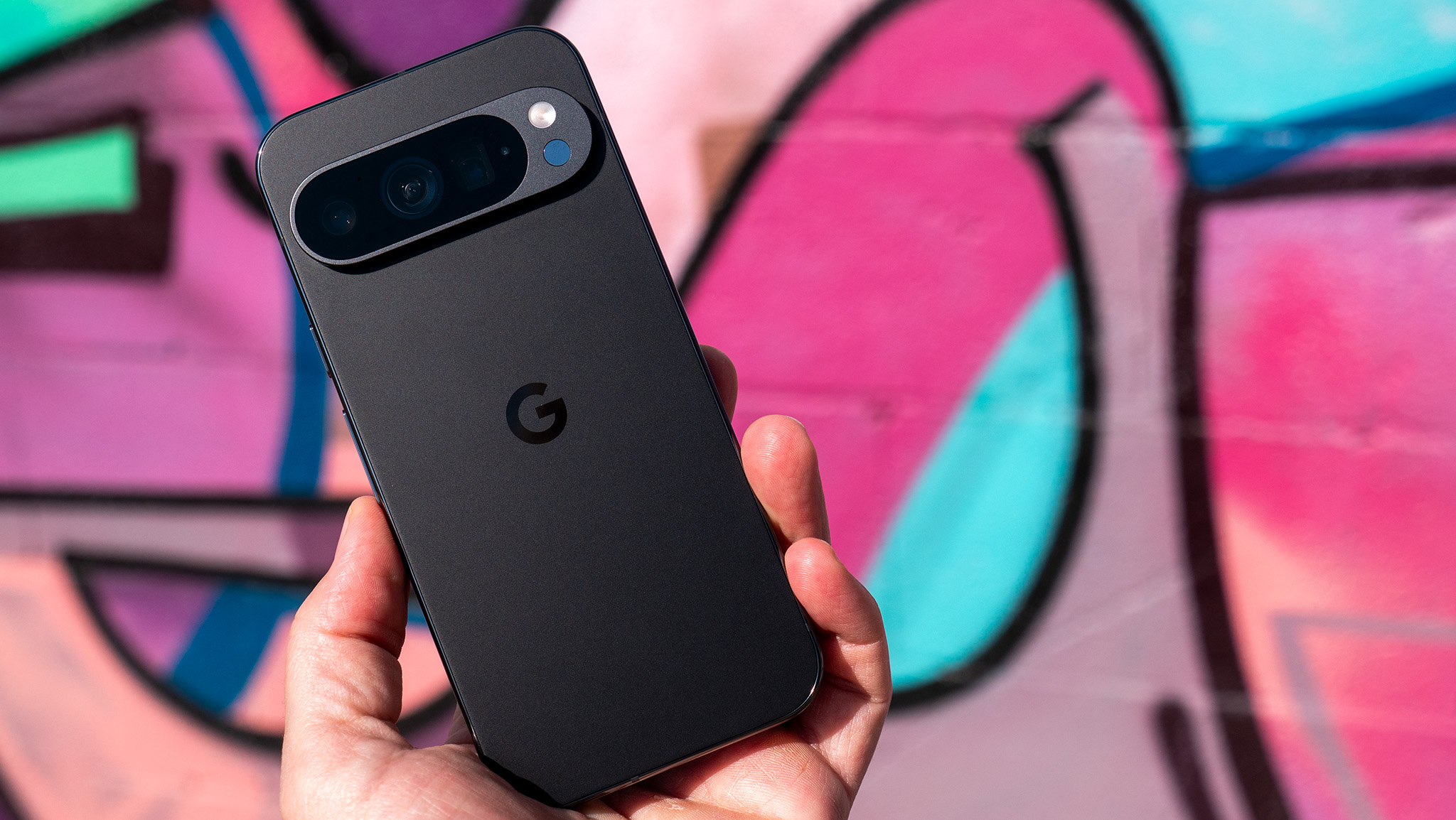
You should buy it if...
- You have pets or kids that you take lots of pictures of.
- You love Google's clever AI features and Pixel exclusives like call screening.
- You like to keep your phones for years before updating.
You should not buy it if...
- You play lots of mobile games.
- You want faster charging or more storage at a lower price.
- You're sensitive to light flicker or displays that use low-Hz PWM dimming.
Over the years, Google has figured out clever ways to differentiate its Pixel line from other phones in meaningful ways. Pixel-exclusive features like Call Screening, advanced spam detection, and Pixel VPN have been mainstays of the line for years, while new Pixel-exclusive features like Pixel Screenshots, Pixel Studio, and camera modes like Add Me are sure to make your friends and family jealous.
But there's an underlying upfront value problem that continues to grow. Pixel is once again $100 more than the previous year. Tensor is still slower than other competing processors and heats up more quickly than those, too. Google hasn't improved its display dimming rate as other companies have, and the ultrasonic fingerprint sensor is problematic for some people, too.
Thankfully, Pixel 9 deals will often get you the phone for next to nothing as Google tries to expand its reach globally and get more Pixels into more people's hands. It doesn't make up for some of the other problems the phone has, but it's easy to give Pixel a shot and see if all those amazing exclusive features and apps are more important to you than raw performance or charging speed. Plus, being able to choose a size without losing important features is finally a reality.
As for me, I'll be going back to using my OnePlus 12 now.
Finally! Get a smaller phone without losing all the great features of the biggest models. The Pixel 9 Pro includes a triple camera system on the back with a 5x optical zoom camera, Pro-grade software features, and a bold new design you just might love.
When only the biggest display will do, the Google Pixel 9 Pro XL is the right phone for you. Packing Google smarts and the latest bag of AI tricks powered by Gemini, the Pixel 9 Pro XL will get it done.







